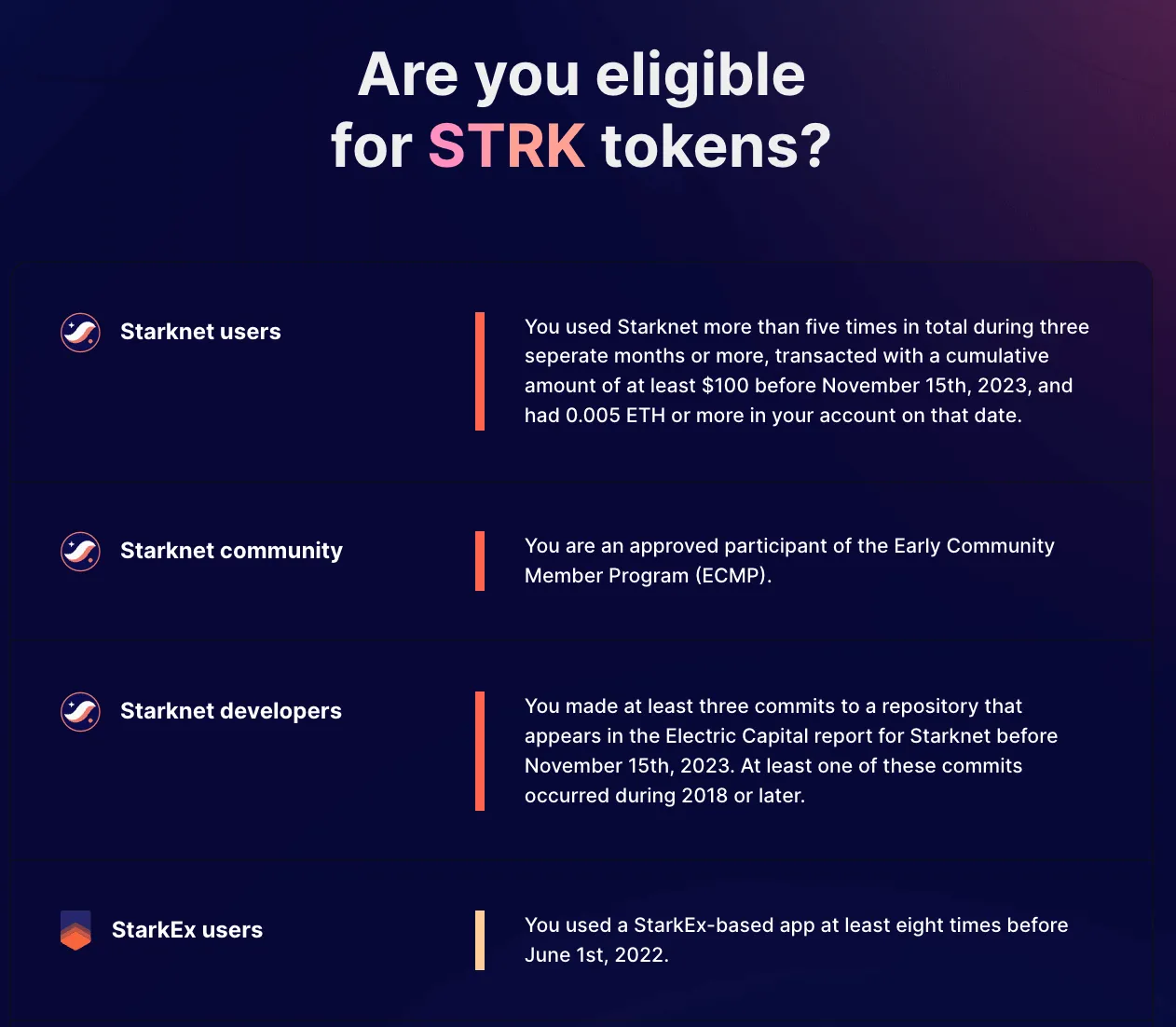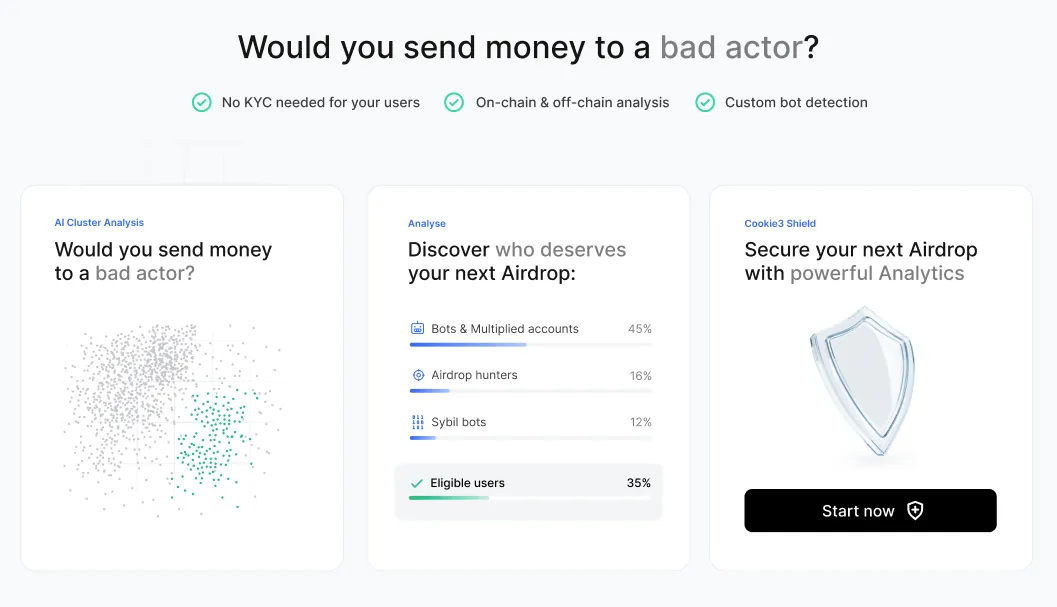
Sustainable Airdrops for User Incentivization: Cookie3 Airdrop Shield
Michał Stec
Business Development Manager
23 Feb '24
Sustainable airdrop campaigns are getting harder due to bots and airdrop hunters. With the combination of on-chain and off-chain data Cookie3 introduces Airdrop Shield. It allows Web3 projects to exclude malicious users, safekeeping the token airdrops.

Introduction
First introduced in 2014 by "Iceland’s Bitcoin" Auroracoin, airdrops became a Web3 industry standard rewarding users for their participation in the ecosystem.

Source: https://www.coingecko.com/research/publications/biggest-crypto-airdrops
How did airdrop farming become mainstream?
When projects began offering token allocations based on users’ engagement, a new narrative emerged: airdrop farming.
In his recent interview on Into the Bytecode Youtube channel, Vitalik Buterin told Sina Habibian:
“I think it’s also been amazing to see how much Farcaster has taken off. It’s amazing that we’re starting to see a crypto application that people actually use, that is not finance-related. It’s interesting that you can see people on Twitter sometimes having a hard time comprehending it because when I commented on Farcaster, some people were replying with things like, ‘Wow, you know, Vitalik says Farcaster is the narrative, it means I need to buy degen tokens.’ There is an immediate interface to the narrative - how do I align my bag with the thing. Of course, that's not the whole point.”
The same applies to the ‘airdrop narrative’. Often, before the official token allocation is confirmed, people already speculate and engage in activities that could grant them eligibility for the airdrop.
What actions are rewarded in the airdrop campaigns?
Airdrop activities vary depending on the project, but they include a combination of:
- Completing on-chain/off-chain actions eligible for airdrop allocation on quest platforms (Uniswap).
- Staking an ecosystem's native token to receive tokens of the projects that build within that ecosystem (DYM, SAGA, ALT).
- Holding an asset related to the ecosystem that releases its token (ApeCoin).
- Interacting with the ecosystem of dApps on a specific chain within a certain period (Starknet)

Source https://provisions.starknet.io/
What to do before planning a token airdrop campaign?
Alongside the financial aspects that arise with token listings on exchanges, some questions should be asked when planning a sustainable airdrop:
- Who should be rewarded?
- What should be the criteria for the rewards?
- How will that criteria be evaluated to allocate the tokens to real contributors?
- What are the solutions that the market has come up with to this point?
What are the current solutions?
As we look into the ‘Airdrop Farming’ issue we listed couple of solutions currently available:
1. KYC: User identification can prevent multi-account farmers known as Sybil attackers. However, it contradicts the anonymity cherished by Web3 communities.
2. Lottery Airdrops: Randomly selecting users eligible for the allocation is KYC alternative. However, it risks that legitimate users will miss out on rewards altogether as multi-account attackers have increased chances of being selected.
None of these solutions are perfect. But, there's a third way...
Introducing the Cookie3 Anti-Bot Solution

We invited Cookie3 clients to a focus group aimed at understanding what they deal with during Sybil or bot attacks. Some of our clients noted up to 70% of multiple accounts/bots in their pre-airdrop campaigns. Multiple cases showed that single “users” were engaging with their platforms using over 5000 wallets.
What are the risks of airdrop bots?
1. Bots dump airdropped tokens quickly, increasing selling pressure.
2. Smaller post-airdrop hype due to value extracted by malicious actors.
3. More value could have gone to genuine community members to boost involvement.
4. A risk of dissatisfaction in the community that an airdrop was unfairly distributed or manipulated by bots.
How does Cookie3 Antibot Shield tackle it?
Cookie3 Airdrop Shield enables effective bot detection using both off-chain and on-chain data sources. It is using over 15 different behavioral characteristics and advanced segmentation to train the bot detection AI models.
Eventually you receive a list of wallets flagged by the bot detection Al algorithm leaving the flexibility to decide how strictly you want to exclude them.
Cookie3 Airdrop Shield have the potential to save anywhere from thousands to millions of USD worth of tokens. These savings can then be redirected to real community members, with the following benefits:
- Only real users will engage after your airdrop campaign.
- Your community will share their bigger airdrops and speak about the exclusion of bots, creating virality around the project.
- The selling pressure of the airdropped tokens will be mitigated, ensuring a sustainable token price.
Conclusion
If you plan your airdrop, remember there is a technology to keep your community and tokenomics safe.








